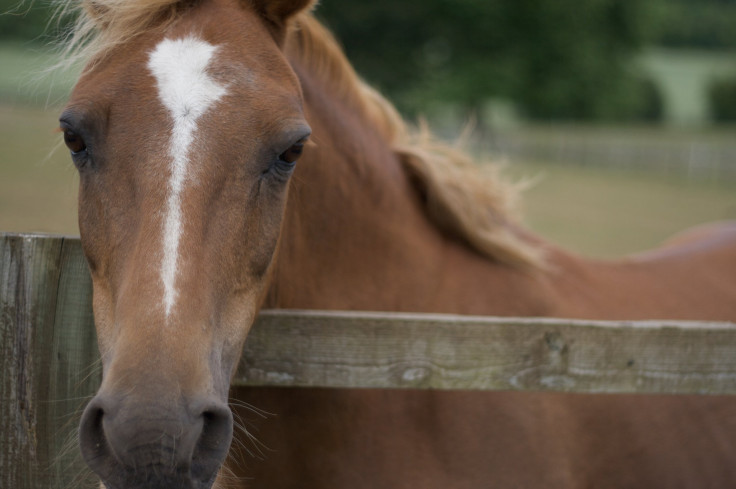EEE Found In Mass. Horse, Second Case In 2 Years: Health Officials Raise Threat Level To 'Critical'

A horse in Belchertown, Mass., is the first one this year to be diagnosed with the potentially fatal mosquito-borne disease, Eastern equine encephalitis (EEE). State health officials announced the warning to the public because of its significant danger not only to horses, but also to humans. Seven residents were infected with EEE last year, which forced officials to cancer all evening outdoor events for communities that were considered at "critical" or "high" risk for contracting EEE for the rest of the season.
This rare viral disease only affects horses and humans and is exclusively spread by mosquitos, mainly in eastern United States. The first findings of disease-carrying mosquitoes has raised the infection risk level to "critical" in Belchertown, and health officials are advising residents to consider canceling any evening outdoor events for the rest of the mosquito season. The risk level in surrounding communities was raised to "moderate" on Tuesday.
"Today's finding significantly raises our concern for the area," said Dr. Catherine Brown, a public health veterinarian. "It's important that people in high risk areas protect themselves from getting bitten by mosquitoes. Use insect repellant, cover up exposed skin, and avoid outdoor activities at dusk and nighttime, when mosquitoes are at their most active."
According to the New York State Department of Health, approximately five to 10 EEE cases are reported annually, and all five that were reported in New York between 1971 and 2011 were fatal. A third of those diagnosed with EEE will suffer permanent brain damage and greatly decrease the quality of life. The chance of contracting the disease is at its peak from late July through September, during which more mosquitoes are present and active, especially in the evenings.
"What we know from other cases, is that the potential for spread to human exists," Brown said.
After the initial bite, symptoms take four to 10 days to develop and by that time, an infected person will be hospitalized, placed on respiratory support, given IV fluids, and monitored heavily. There is currently no specific treatment for EEE.
The disease has also been called "Triple E" or the "sleeping sickness" because of the brain lesion that plagues the body with abnormal drowsiness. The first recognized and recorded case of EEE was in 1831 when 75 horses died. And by 1938, there were 30 children identified and diagnosed with the disease, which soon after killed them.
Horses usually suffer complete paralysis and death only two to four days after the appearance of symptoms, which include a fever, sensitivity to sound, bouts of excitement, and restlessness. Fortunately for horses, the disease can be prevented with a vaccine, which is usually administered with other routine vaccinations.
Published by Medicaldaily.com



























